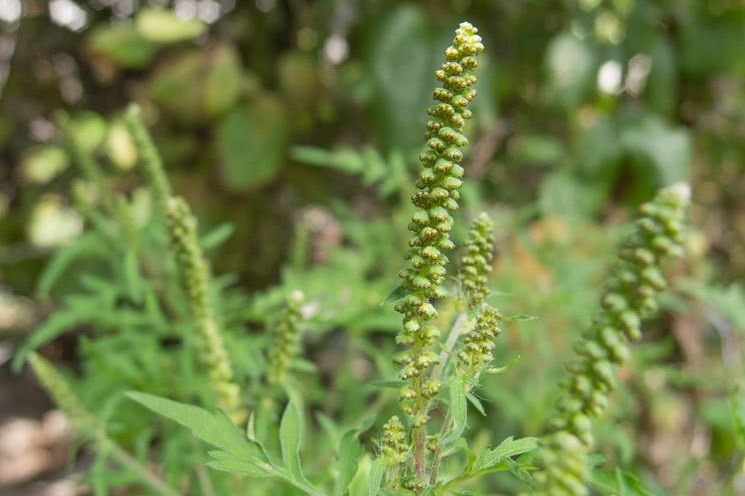
(Vienna, 25-08-2016) Climate change could cause new hay fever misery for millions of people across Europe – according to a new report from the FP7-EU project Atopica. Research published today reveals that the number of people suffering hay fever from ragweed pollen could double in just 35 years. Researchers believe climate change will be responsible for two thirds of this increase. Higher ragweed pollen concentrations and a longer ragweed pollen season may also increase the severity of ragweed symptoms, with populations across most of Europe likely to be affected in the next 35 years.
Hay fever is a common allergic condition that is estimated to already affect 40 per cent of Europeans at some point in their life. It is caused by an allergy to pollen – including tree pollen (released during spring), grass pollen (released during the end of spring and beginning of summer) or weed pollen (especially released late autumn).
Researcher Iain Lake from UEA’s School of Environmental Sciences, said: “Pollen allergy is a major public health problem globally but it has not been known what sort of an impact climate change will have.
“This is the first study to quantify what the consequences of climate change on pollen allergy may be.” The research team investigated the potential impacts of climate change on ragweed plant distribution, plant productivity, pollen production and dispersal, and the resulting allergy impacts across Europe.
Ragweed is a highly invasive plant and its pollen is a common allergen. A single plant may produce around a billion grains of pollen per season, which is carried on the wind and its potential to cause allergies is high.
The team created maps of estimated ragweed pollen counts over the pollen season and combined them with data on where people live and levels of allergy in the population.They found that the number of people affected by Ragweed pollen is likely to more than double in Europe from 33 to 77 million people – by as soon as 2050.
Michelle Epstein, the Atopica Coordinator from the MedUni Wien said: “Ragweed pollen allergy will become a common health problem across Europe, expanding into areas where it is currently uncommon. “The problem is likely to increase in countries with an existing ragweed problem, such as in Hungary and Croatia. But increases will happen in Germany, Poland and France.
“Higher ragweed pollen concentrations and a longer ragweed pollen season may also increase the severity of symptoms. The projections suggest that ragweed pollen will persist from mid-September to mid-October across most of Europe.
“The annual economic burden of allergic disease in the EU is already estimated at between €55 billion and €151 billion so increases on this level will further increase costs.
“Management of this invasive plant could reduce the amount of people affected to about 52 million, while a scenario which sees very rapid plant invasion would increase the amount of people affected to around 107 million. The control of ragweed is important for public health and as an adaptation strategy against the impacts of climate change.
“It is also important to add that climate change consequences will not be restricted to ragweed – and a range of other pollen-producing species are likely to be affected. Our methods provide a framework for other studies investigating the impacts of climate change on pollen allergy for other species.”
‘Climate change and future pollen allergy in Europe’ is published in the journal Environmental Health Perspectives on Monday, August XX, 2016
Service: Environmental Health Perspectives
”Climate change and ragweed pollen allergy in Europe.” Iain R. Lake, Natalia, R. Jones, Maureen Agnew, Clare Goodess, Filippo Giorgi, Lynda Hamaoui-Laguel, Mikhail A. Semenov, Fabien Solomon, Jonathan Storkey, Robert Vautard, Michelle M. Epstein.
“Climate Change and Future Pollen Allergy in Europe” https://ehp.niehs.nih.gov/doi/10.1289/EHP173 has been included in July 2020 in a new curated collection of articles developed by Environmental Health Perspectives (EHP). This collection showcases research articles, reviews, and commentaries that contributed significantly to the newly released 2019 Journal Impact Factor ™.https://ehp.niehs.nih.gov/curated-collections/2019-JIF.